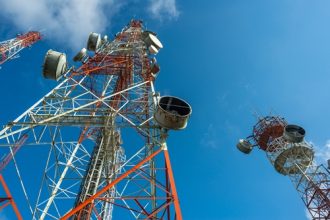June 10, 2016
The Board Cannot Adopt a Surprise Claim Construction
In SAS Institute, Inc. v. Complementsoft,LLC, [2015-1346, 2015-1347] (June 10, 2016), the Federal Circuit agree with the Board in an IPR involving U.S. Patent No. 7,110,936 on all of the challenged constructions resulting in finding of invalidity of all but one of the challenged claims. The Federal Circuit also confirmed that the Board did not need to address in its final written decision claims for which IPR was not instituted. Finally, the Federal Circuit vacated the Board’s determination that claim 4 is patentable and remanded so that the parties may address a new construction that the Board adopted in its final written decision after interpreting the claim differently before.
With respect to claim 4, which was sustained based upon a different construction of the phrase “graphical representations of data flows, the Federal Circuit remanded so that the parties could address the construction in the final written decision. The Federal Circuit agreed with the construction of graphical representations of data flows” as “a graphical representation comprised of icons depicting data processing steps and arrows to depict the movement of data through source code.” The Federal Circuit noted that the term was not used in the specification, and agreed with the Board’s use of the definition of the term “data flow diagrams,” which did appear in the specification.
The Federal Circuit rejected petitioner’s argument that because the construction was narrow, it could not be the broadest reasonable interpretation, saying:
While we have endorsed the Board’s use of the broadest reasonable interpretation standard in IPR proceedings, we also take care to not read “reasonable” out of the standard. This is to say that “[e]ven under the broadest reasonable interpretation, the Board’s construction cannot be divorced from the specification and the record evidence, and must be consistent with the one that those skilled in the art would reach.”
The Federal Circuit also relied upon the structure of the claims, noting that some of the claims speak broadly of flows, while others speak of data flows and program flows, was instructive as to the meaning of the claims (although this is not claim differentiation).
The Federal Circuit affirmed the Board’s invalidation of claims in the face of patent owner’s arguments that the claim constructions were incorrect. The Federal Circuit specifically noting that because the specification and prosecution history did not conclusively resolve construction, it was appropriate for the Board to rely on dictionaries and expert testimony to aid its construction.
The most interesting aspect of the case may be the Federal Circuit’s treatment of the Board’s change in claim construction between the Institution Decision and the Final Written Decision, which gave the Federal Circuit “pause.” The Federal Circuit noted that the Board’s new construction of “graphical representations of data flows” as “a graphical representation comprised of icons depicting data processing steps and arrows to depict the movement of data through source code,” varied varied significantly from its initial interpretation of the term as “a map of the path of data through the executing source code.” The Federal Circuit was not concerned that the Board changed its construction, which the Federal Circuit said it was free to do, but that it Petitioner was not given an opportunity to address the new construction since the Patent Owner agreed with the original construction, and never suggested that the Board adopt the construction that eventually materialized in the final written decision. Under these circumstances, the Federal Circuit said that it was difficult to imagine either party anticipating that already-interpreted terms were actually moving targets, and it is thus unreasonable to expect that they would have briefed or argued hypothetical constructions not asserted by their opponent. The Federal Circuit vacated the decision, and remanded for further proceedings.



































